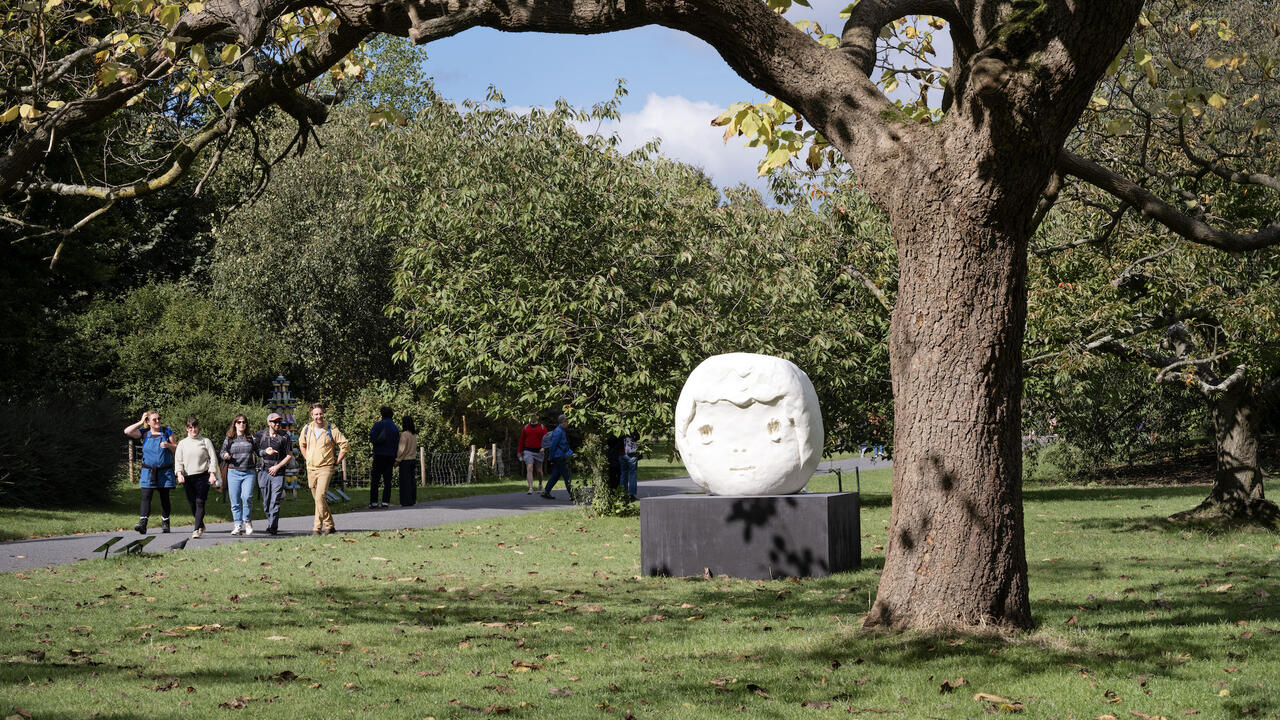Wang Gongxin
White Cube, Hong Kong
White Cube, Hong Kong

‘What goes around comes around’ provides an apt description of the way in which Wang Gongxin’s work has come full circle since the 1990s, even as a distinct sense of unease pervades ‘Rotation’, the Beijing-born artist’s first solo exhibition in Hong Kong.
Consider, for instance, Wang’s recurring use of liquids. Water, milk, ink and even antifreeze seep into Wang’s multimedia works here: recent constructions based on sketches from the mid-1990s alongside other pieces made during the same period that have reappeared following their inclusion in the 2017 Shanghai Biennale. The exhibition combines Wang’s past and present work, but ‘Rotation’ is neither survey nor retrospective and the process of looping back represents less of a return to form than a vehicle for rethinking familiar tropes.
Wang gained early recognition as a painter before notably changing tack to become one of China’s first artists to experiment with moving-image media. As such, his work has been included in significant survey exhibitions, most recently ‘Art and China After 1989’, the large-scale survey of experimental – and increasingly controversial – art currently on view at the Guggenheim Museum in New York.

‘Rotation’ instead opts for quiet potency, beginning with Dialogue (1995), which dominates a darkened ground-floor gallery. The large rectangular table resembles minimalist works such as those by Tony Smith, except for two light bulbs suspended above it. Hanging like balance scales, these alternately descend at a metronomic pace to pierce what otherwise appears as a smooth black surface.
In Horizontal (2017), one of three new works created for the exhibition, Wang again uses a metal container, this time set inside a tilted antique Chinese table to prevent its dark liquid contents from spilling over. A hidden motor causes the surface to intermittently ripple in grid-like formations, drawing associations with anything from Ad Reinhart to ink art that dissolve in front of our eyes.
Along with Wang’s tables there are chairs, such as the set of four fabricated from burnished metal in the installation Unseatable (1995). These alternately hold milk and ink in their seats, and are placed in a circle to allow for another dangling light to pass slowly over them. Other furniture appears, too, including cribs hand-constructed from copper pipes in Baby Talk (1996), while Humidifier (2017) adapts a ready-made version. In the former, the artists’ family members mouth child-like gibberish, while the latter rocks mechanically back and forth.

Old and new techniques coalesce in the aptly titled Sunset No. 1 and Sunset No. 2 (both 2017), wall pieces installed in an upstairs set of galleries. Created by layering car paint over rectilinear canvases and mounted next to similarly shaped marble slabs, both are partially framed by the same metal Wang uses to prevent liquid from overflowing elsewhere. Wangs Sunsets radiate light: through the glossy car paint that renders the canvases reflective and by way of a pulsating glow made possible by hollowing out the marble stone to conceal a light source behind its crystalline surface.
Although Wang’s unseen mechanical devices ensure wide-ranging visual and audible effects, they are never cheap tricks. Rather, the rippling, gurgling, rocking and glowing features not only enliven our experience of the works in ‘Rotation’ but denote Wang’s adroit handling of materials. Wang’s self-proclaimed focus on the ‘mobile’, ‘radiant’ and ‘liquid’ manifests itself through a sometimes literal balancing act of elements that never lose their sense of fragility.
Main image: Wang Gongxin, Unseatable, 1995, metal chairs, flashing light and motor, each chair 48 x 49 x 83 cm, installation view at White Cube, Hong Kong, 2017. Courtesy: White Cube, Hong Kong






















